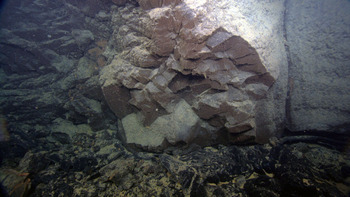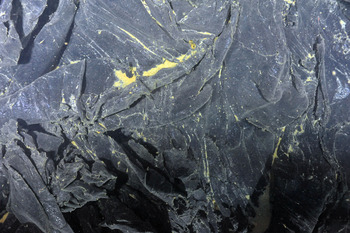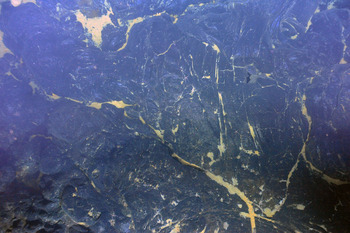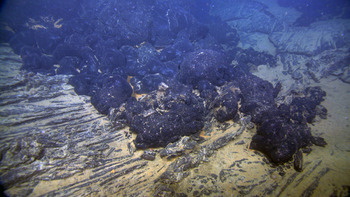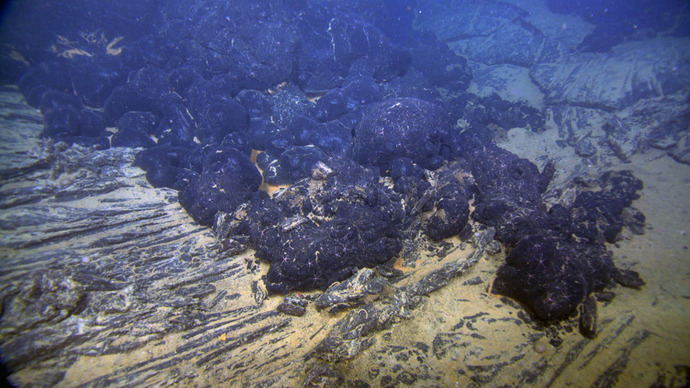
A small pillar marked by bathtub rings is encased by broken slabs of the sheet flow that erupted in April 2011.

Small Pillar Encased by Sheet Flow
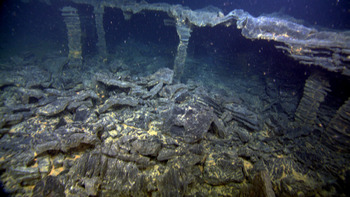
The ROV ROPOS gently flew into a small collapse basin marked by pillars, arches and isolated columns of basalt. These areas form as lava drains out from deep lava pools. The surface of the lava lake or channel very rapidly cools as it interacts with near freezing seawater. As the lava drains out, the roof is not strong enough to maintain its weight, and collapses into a pile of talus.

Pillars of the Ocean
Node Placement: Today we dove on the eastern outer wall of the Axial caldera to completely characterize the site where L3-Maripro will deploy the Primary Node for the cabled observatory at Axial Seamount. Using the Canadian robotic vehicle ROPOS, which is operated by the Canadian Scientific Submersible Facility and which is equipped with a superb high-definition video camera (Zeus Plus from Insite Pacific), we traversed over an old lava channel. This area is a good site for the node because it is flat and away from the caldera's edge. We were able to stream the video live and at the same time talk to the UW team onshore to confirm that this is the best site for placement of the node.
Finding the new lava flow: Based on a very high-resolution bathymetric map provided to us by D. Clague and D. Caress that they collected only a few weeks ago with the MBARI autonomous vehicle, we drove north to determine if the April 2011 eruption occurred east of the caldera wall. We traveled a bit over 500 m to the north and came upon jet black, glassy, and glistening new lava only 3 months old! Keith Shepherd, the Operations Manager of ROPOS, sampled a few sites of the flow so that scientists onshore can determine the lava geochemistry and also precisely date the flow with distance away from the lava source. This is a significant opportunity for us because only a handful of times in our history have we been able to study such a young flow and know when it erupted. Along the path of the flow we have viewed incredible, magical scenery that includes large collapse basins with pillars marked by "bathtub" rings.
Follow-on work today and early tomorrow: The dive will continue for several hours into tomorrow, ending at the ASHES hydrothermal field. Along the way we hope to determine if a pressure recorder that Bill Chadwick from NOAA-OSU placed on the seafloor to measure pre-eruption inflation of the volcano's floor can be recovered. We will also survey to find optimal routes for extension cables to ASHES, for seafloor seismometers, and new pressure tilt meters, and we will recover a 1/2-sized junction box that was deployed for testing last year.
